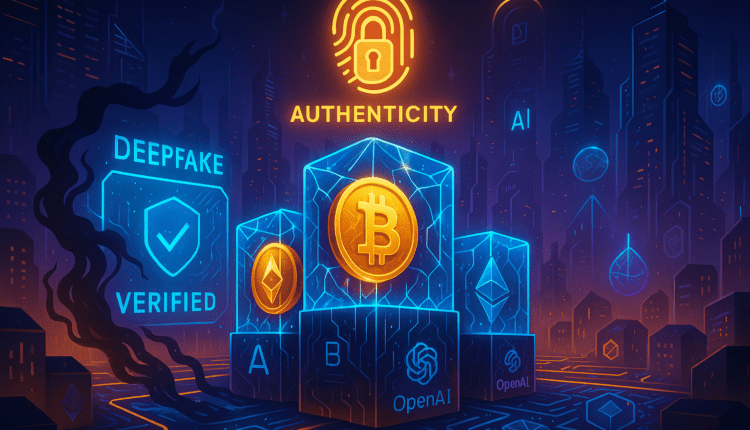Blockchain Must Anchor AI-Generated Media Before Trust Disintegrates

As AI media explodes, blockchain emerges as a key to securing content ownership, fighting deepfakes, and restoring public trust in the digital era.
As generative AI continues its meteoric rise, society stands at a pivotal crossroads: will digital media remain trustworthy, or will deepfakes and synthetic content overwhelm our sense of what’s real? The answer may lie in the blockchain.
In late 2023, Hollywood writers went on strike, worried AI would replace authentic storytelling with machine-generated scripts. Just months later, deepfakes of celebrities like Taylor Swift and Tom Hanks began appearing in public service ads warning about election disinformation. Now, in early 2025, AI isn’t just a tool—it’s a force reshaping our digital landscape.
Online advertising service 1lx.online
Although hailed as a democratizing force, AI’s proliferation has sparked anxiety. A recent U.S. survey shows 52% of respondents are more concerned than excited about AI’s growing presence in everyday life. Globally, 68% of people say they are worried about online privacy, largely due to fears about manipulated and deceptive media.
It’s no longer about silly memes or parody videos. AI-generated content is reshaping how we create, share, and consume information. Text, images, audio, and video can be generated with little effort, raising serious questions about authenticity, content ownership, and public trust. The lack of verification mechanisms threatens not only creative industries but also journalism, finance, and geopolitics.
Enter blockchain.
Often regarded as a foundation for decentralization and digital trust, blockchain is now finding a new purpose: serving as the digital notary for AI-generated content. With decentralized verification networks, content can be authenticated on-chain, across platforms, without centralized gatekeepers shaping what’s deemed trustworthy.
But current IP laws aren’t keeping pace. When an AI generates a work, who owns it? The model’s creator? The user who typed the prompt? Or no one? Without verifiable ownership, the door is open for lawsuits, fraud, and misuse. Crypto users have already felt the impact—AI-generated scams targeting wallets have surged, revealing the urgent need for content provenance in the blockchain space.
Blockchain offers a path forward: a tamper-proof ledger for digital creations. Each piece of AI-generated content can carry an on-chain record, tracking its origin, edits, and ownership. It’s like a digital fingerprint that ties each creation to its source.
In gaming, developers could register AI-created assets to prevent theft. Studios could verify and protect AI-generated film scenes. In the metaverse, users could control their AI-generated identities, secured with immutable proof of authenticity.
Ultimately, the integration of blockchain with generative AI is not just about innovation—it’s about survival. As the AI content market nears a projected $1.3 trillion valuation by 2032, ensuring transparency, traceability, and authenticity will be vital. Blockchain may be the only way to preserve the integrity of digital media in a synthetic world.
Our creator. creates amazing NFT collections!
Support the editors - Bitcoin_Man (ETH) / Bitcoin_Man (TON)
Pi Network (Guide)is a new digital currency developed by Stanford PhDs with over 55 million participants worldwide. To get your Pi, follow this link https://minepi.com/Tsybko and use my username (Tsybko) as the invite code.
Binance: Use this link to sign up and get $100 free and 10% off your first months Binance Futures fees (Terms and Conditions).
Bitget: Use this link Use the Rewards Center and win up to 5027 USDT!(Review)
Bybit: Use this link (all possible discounts on commissions and bonuses up to $30,030 included) If you register through the application, then at the time of registration simply enter in the reference: WB8XZ4 - (manual)
Online advertising service 1lx.online
